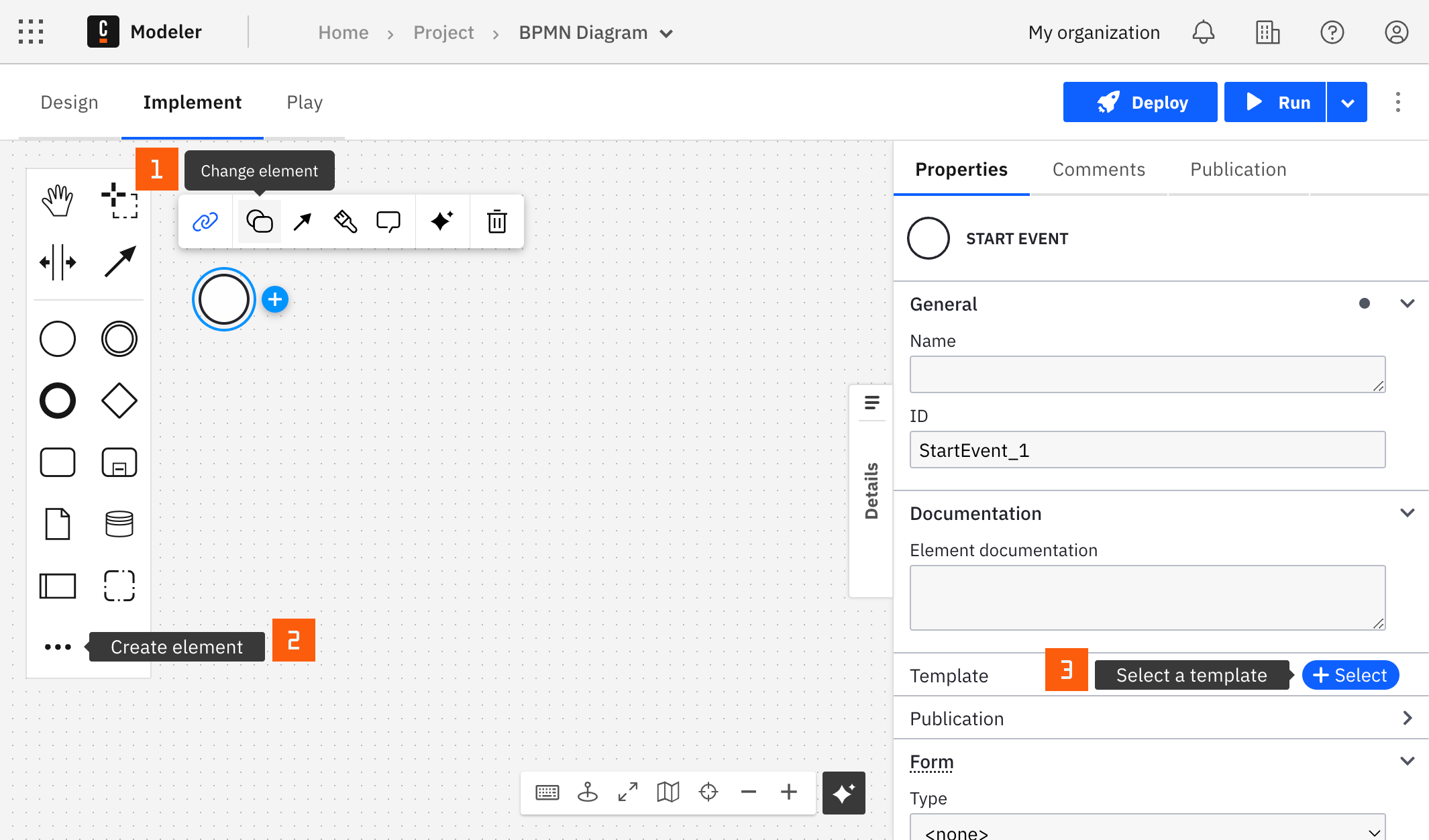Hugging Face connector
The Hugging Face connector is an outbound connector that allows you to interact with Hugging Face models from your BPMN processes.
Prerequisites
To begin using the Hugging Face connector, you need to have a valid API key, and a model deployed with Inference API.
Create a Hugging Face connector task
You can apply a connector to a task or event via the append menu. For example:
- From the canvas: Select an element and click the Change element icon to change an existing element, or use the append feature to add a new element to the diagram.
- From the properties panel: Navigate to the Template section and click Select.
- From the side palette: Click the Create element icon.

After you have applied a connector to your element, follow the configuration steps or see using connectors to learn more.
Make your Hugging Face connector executable
To work with the Hugging Face connector, fill all mandatory fields.
Authentication
Fill the Hugging Face API key field with a valid Hugging Face API key.
Create a new connector secret
Keep your API key safe and avoid exposing it in the BPMN xml file by creating a secret:
- Follow our guide for creating secrets.
- Name your secret (for example,
HUGGING_FACE_SECRET) so you can reference it later in the connector.
Payload
In the Model field, enter a model name you wish to use in your BPMN process, for example, gpt2 if you wish to use
the GPT2 model.
In the Input field, enter input parameters for your model, for example, {"inputs":"What is the Capital of Germany?"}.
Handle connector response
The Hugging Face connector is a protocol connector, meaning it is built on top of the HTTP REST connector. Therefore, handling response is still applicable as described.
Usage example
Let's assume you want to use the BART (large-sized model), fine-tuned on CNN Daily Mail model,
and created the HUGGING_FACE_SECRET secret containing your Hugging Face API key.
Consider the following input:
- Hugging Face API key:
{{secrets.HUGGING_FACE_SECRET}} - Model:
facebook/bart-large-cnn - Input:
{
"inputs": "Java is a high-level, class-based, object-oriented programming language that is designed to have as few implementation dependencies as possible. It is a general-purpose programming language intended to let programmers write once, run anywhere (WORA), meaning that compiled Java code can run on all platforms that support Java without the need to recompile. Java applications are typically compiled to bytecode that can run on any Java virtual machine (JVM) regardless of the underlying computer architecture. The syntax of Java is similar to C and C++, but has fewer low-level facilities than either of them. The Java runtime provides dynamic capabilities (such as reflection and runtime code modification) that are typically not available in traditional compiled languages. As of March 2024, Java 22 is the latest version. Java 8, 11, 17, and 21 are previous LTS versions still officially supported.",
"parameters": { "max_length": 75, "temperature": 10 },
"options": { "use_cache": "false" }
}
- Result variable:
myHuggingFaceResponse.
In the myHuggingFaceResponse you will find the following result:
{
"status":200,
"headers":{
...
},
"body":[
{
"summary_text":" Java is a high-level, class-based, object-oriented programming language. It is intended to let programmers write once, run anywhere. Java applications are typically compiled to bytecode that can run on any Java virtual machine (JVM) regardless of the underlying computer architecture. As of March 2024, Java 22 is the latest version."
}
]
}